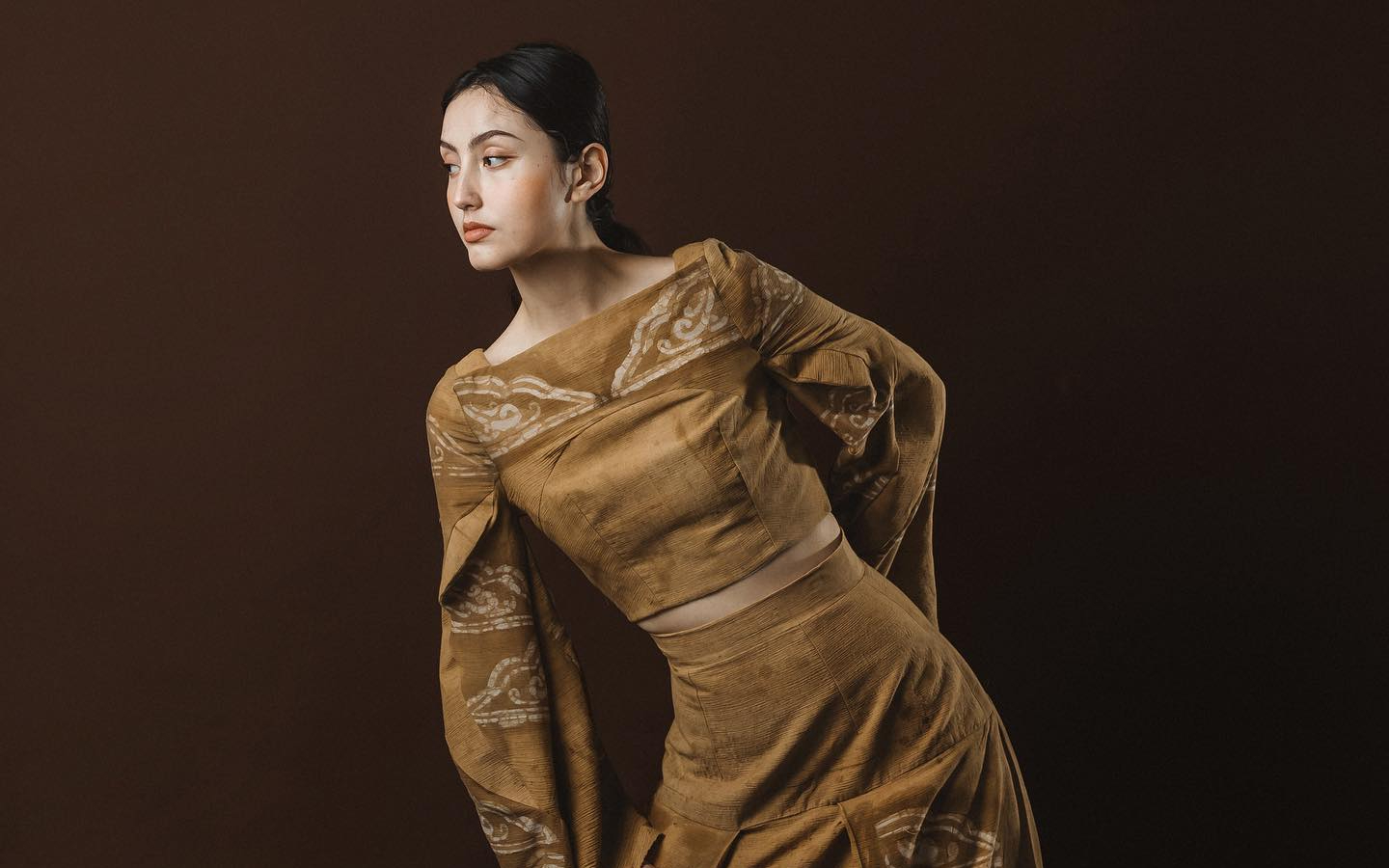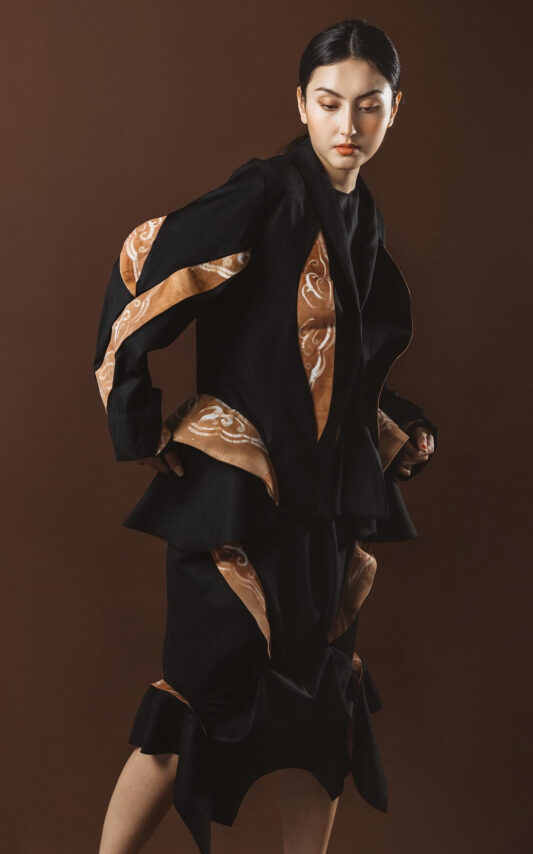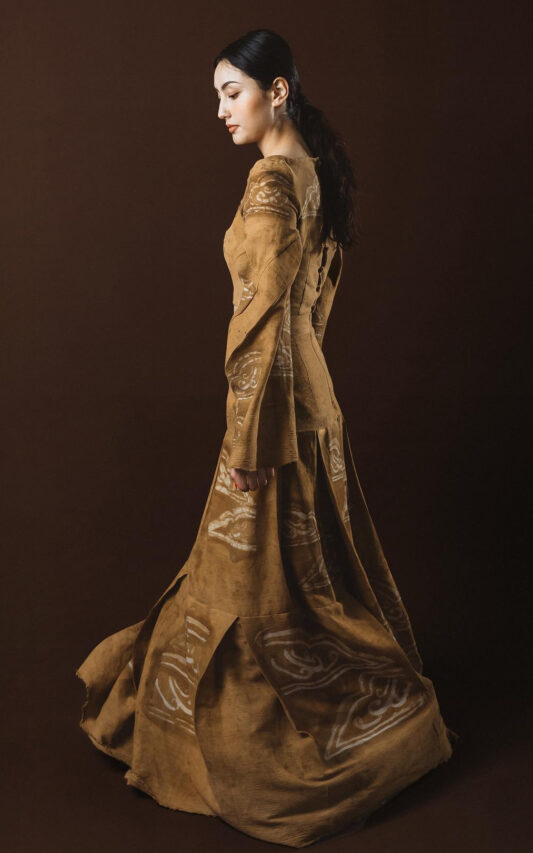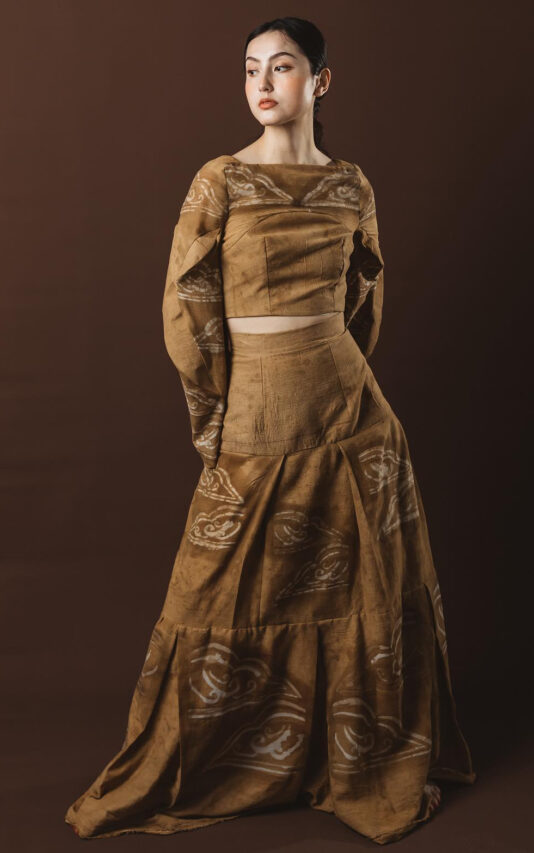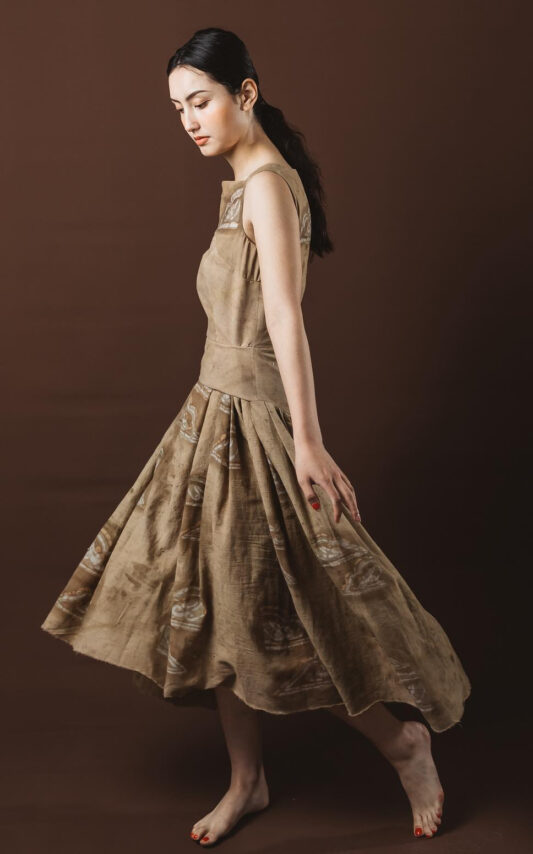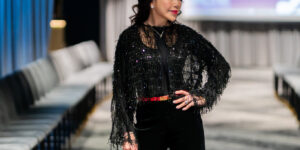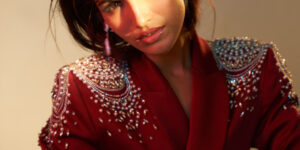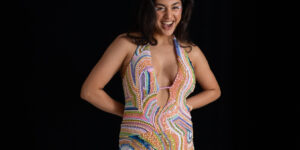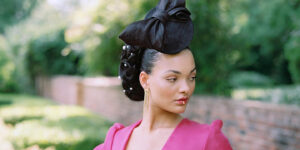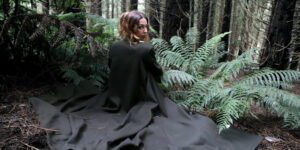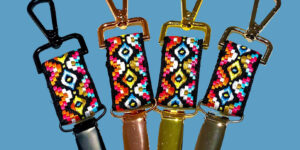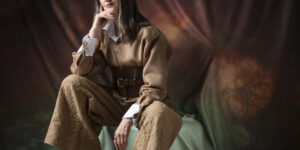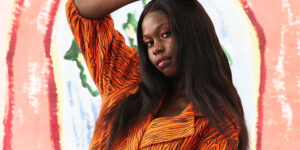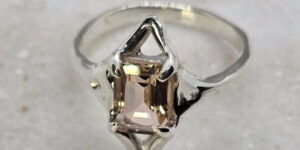Chinese-Indonesian fashion designer Ruth Hadinjoto continues to develop her technique and designs in garment making as she establishes her own eponymous brand after graduating from RMIT University with a BA (Honours) in Fashion Design and BA in Fashion Textiles and Technology.
Inspired by her cultural heritage, Ruth applies traditional techniques in her fashion design process and aims to interconnect her culture, identity and values through her craft. She chooses to use Batik, a historical method of clothing design practised by generations of Indonesians, which involves the application of hot wax over a selected area of design then dying it to decorate the cloth, as a way to express her design motifs and approach to sustainability.
Ruth’s creativity comes from her cultural identity and family identity, as well as her individual perspective of beauty, which leads her to produce exotic textiles and garments. Her innovation combines both the disciplines of Art and Science as she reinvents the batik process together with modern technology, experimenting with fabrics and dyes and utilising laser cutting techniques to develop her textiles. This hybrid method allows her to create detailed print designs using stencils which results in greater efficiency than using the traditional tjanting as the wax application tool. With these beautiful handmade textiles, Ruth further showcases her ingenuity by transforming them into couture-like garments.
On the functional aspects of her creations, Ruth always considers sustainability, executing her work process with a zero waste concept in mind, creating waste-less patterns and using ties for fastenings that are adjustable for all body types. With the high quality and inclusivity of her garments, they are made to last longer and contribute to the slow fashion movement.
As Finalist of multiple fashion awards such as the Victorian Premier Design Awards 2022 and the We the Makes Sustainable Fashion Prize 2023, the team at Revival Runway were curious about her background and fashion practices that led to her success, so we decided to ask her some questions.
How did you become a fashion designer?
I studied fashion design in uni and I thought it was an interesting subject. I really liked drawing in the first place and being able to [transform] my drawings into an intriguing space like art was very interesting to me. That’s when I decided that I wanted to be a fashion designer.
Where do you currently design and make your garments from?
[My design space] is in between my bedroom and kitchen table. Because I only graduated recently, I was able to use the facilities on campus provided by the university [during my studies], but now I have to use my bedroom.
Without your own studio, is there any particular challenge you find working in a home setting?
Yes, especially because I am dying the fabrics by myself, the dye got into the carpets as I don’t have my own studio [to work in]. Apart from that, I don’t have a bigger space so I have to work at a really slow pace and do everything piece by piece.
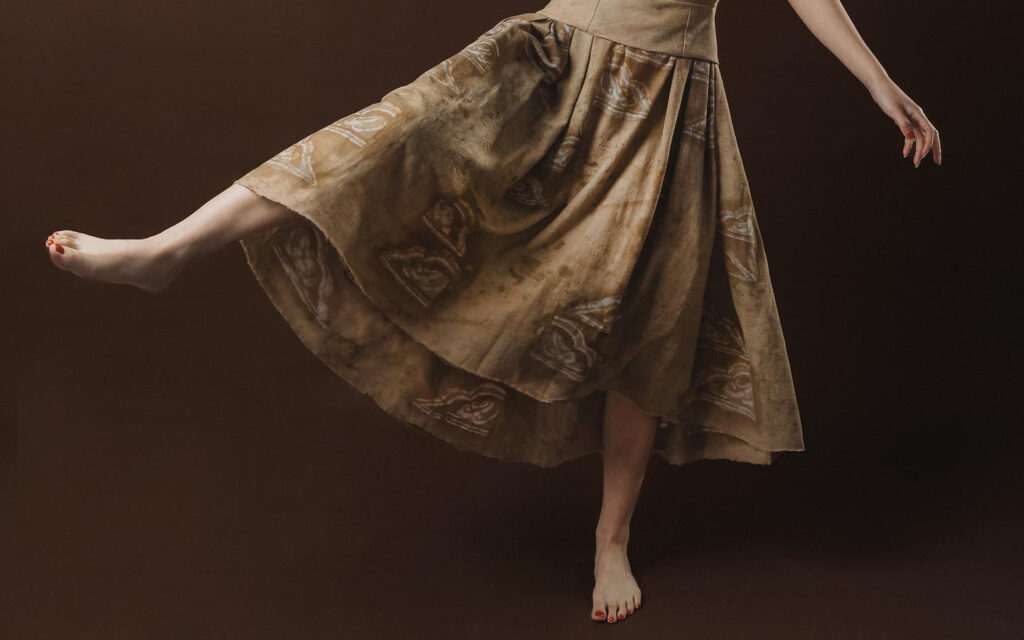
What are your preferred design tools?
At the moment, I am really into understanding my cultural heritage, but I’m combining traditional and modern technology, so I am using a lot of laser cutting to create the shapes and then I use the traditional way which is the wax and the dyes. All of the dyes that I use are naturally-based dyes, so some of them are from fruits like avocado and groceries I got from the supermarket. Some of them are from retail but it’s all natural. I also make my own dyes. Because some of the dyes need a certain level of acidity. They are all from natural ingredients like baking soda and food-grade [products] so they are safe and very traditional. I am now looking into shapes that are more size inclusive so I am also looking at the wrap skirts and very traditional wear of very loose skirts and garments.
How would you define creativity?
When you challenge the present but also the past, something really close to you. For me, it is about where my family comes from, my family background, I want to know more about my family. Because my grandma also makes clothes and sews, I feel very close to her. When I am doing creative work, I always have her as my inspiration in a way. I feel that Asian cultures have a lot of things in the creative space, but because the global design industry is so Western dominated these ideas have been lost. I think these are the things [that] we can bring up.
Who or what is the inspiration behind your fashion creations and how has that influenced you?
I am Chinese-Indonesian, and from my Chinese background, I am really into the hanfu and very traditional clothes because they are so simple but so rich in volume, and how people from centuries behind us can make those beautiful shapes out of very simple [structures]. Like with the flat pattern cut, they are only rectangles but they can make huge gowns. Because I was born in Indonesia, I am very exposed to Indonesian culture, [so] I feel [that] batik is very interesting [as] it is produced with hand craftsmanship; they are very detailed but are not from digital printing, it is from beeswax. [However], if you were to make it by hand or by pencil, it would take ages so I thought [that I could] collaborate with modern technology, and that’s where laser cutting makes sense.
How would you describe the style of your brand?
I am always aiming for a style that is elegant and can boost a woman’s confidence. I want everyone who wears my garments to feel beautiful, pretty, and special. Even though my approach is cultural and traditional, I want every woman to be able to wear them. Not only Indonesians or Chinese people; it’s just the aesthetic that I have. But when it’s on the wearers, I want them to feel that it’s a piece of clothing that can make them feel pretty.
We often hear about your designs being ‘demi-couture’, how is it different from ‘ready-to-wear’ and do you find any challenges in your working process?
Because I’m still doing everything slowly, by myself at the moment, and I really appreciate details, finishings [et cetera], I want them to be well finished. But the challenge is that it’s too slow in this industry where ready-to-wear has more opportunities to be seen by a lot of people. They have this concept that is well known by all of the people and they outsource it, so it is fast-paced and they have more seasons in a year. I only did this because of my own passion and [also from] commissions. I am still starting and I don’t have much experience yet, that is a lot of challenge for me.
Do you have any goals you are working on to achieve currently?
Yes I do. I want to be realistic but at the same time, getting commissions with my marketing capability is hard. I just want to keep making and exploring opportunities without having a goal that is based on numbers. I don’t want to give myself that because I know that it would be so stressful, I just want to be true to what I’m making and I want to get involved in this community like Revival Runway’s fashion showcase and other opportunities; with communities that align with my values. I don’t want to give myself numerical goals.
If there was a piece of advice you could give to your past self, what would it be?
Just keep on doing what you’re doing. Don’t be too afraid, because I was too afraid of [not being able to get a job] as fashion is hard. Things work out one step at a time, so just follow the path in front of you!
What is something you have learnt having your own brand now?
I have learned about the importance of other aspects in the industry. I only studied design and production, but I have now learned the importance of the marketing and business role. They are way more important than I thought they were. It’s a big part of how I market, how I manage the financial things. Designing is creating, but planning is what’s important to make a business work.
To see more of Ruth’s work and to contact her for commissions, go to @ruthhadinjoto.
Discover more interesting designers in our Brands & Designers section

